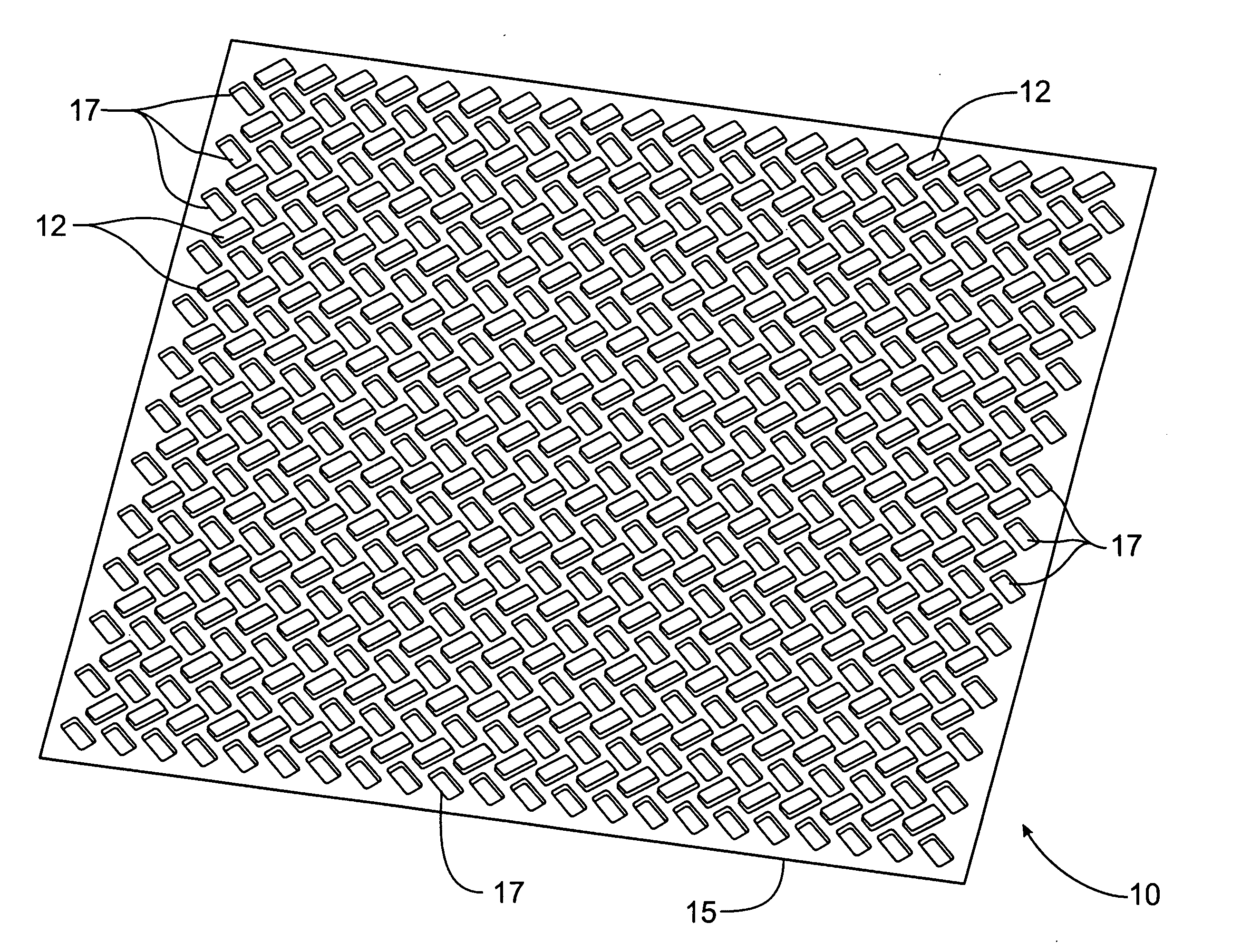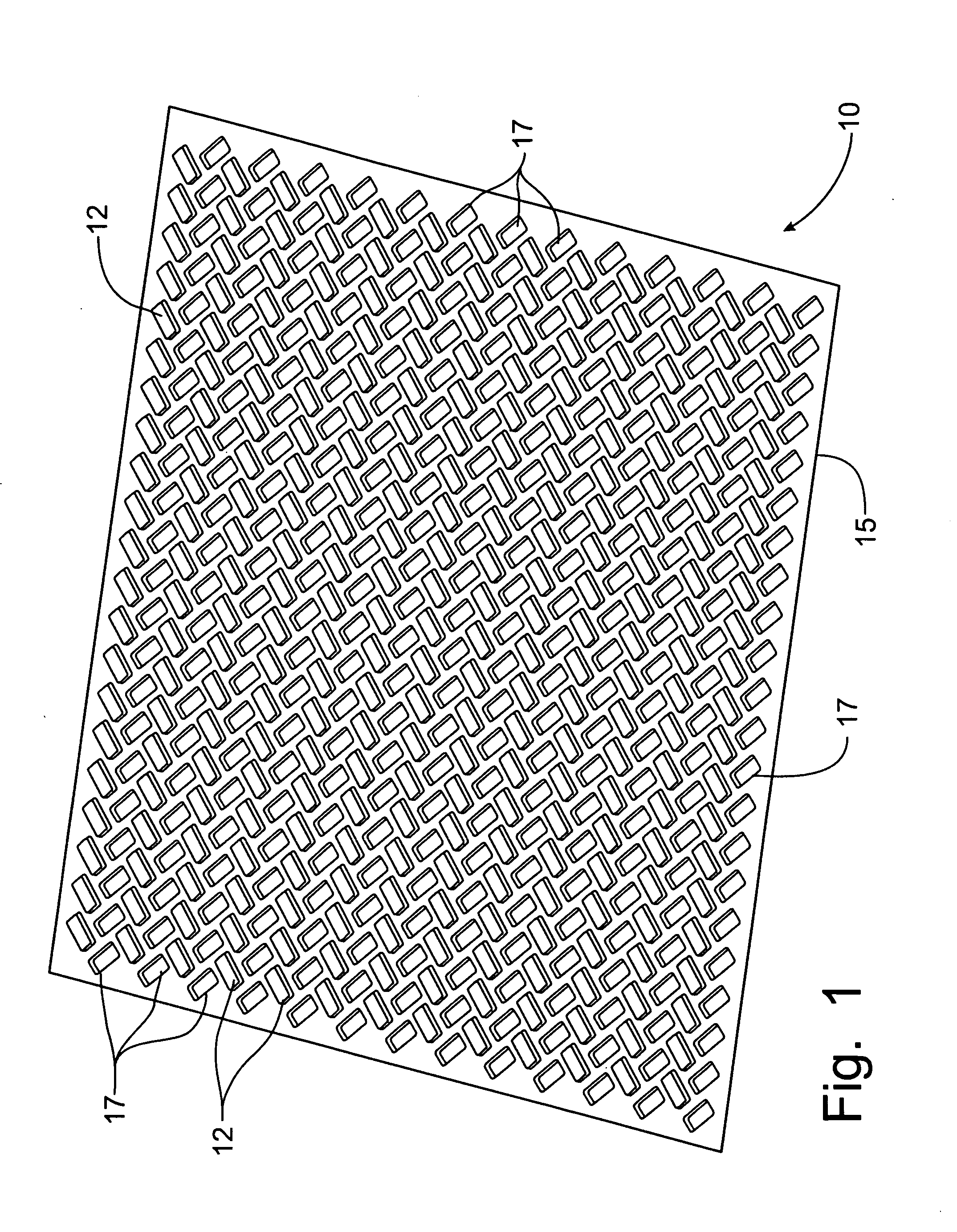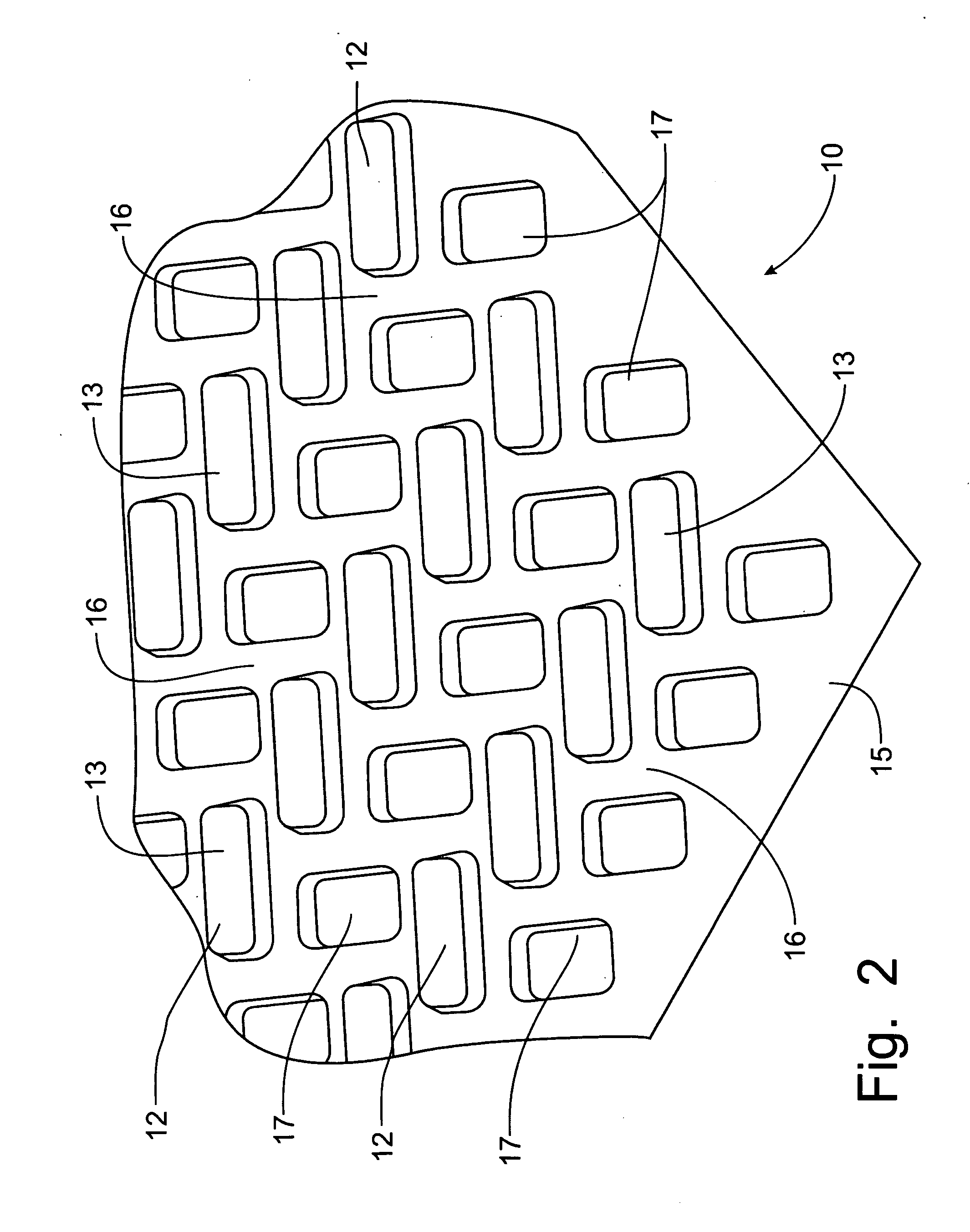Moisture Drainage Spacer Panel for Building Walls
a technology for building walls and moisture drainage, which is applied in the direction of walls, constructions, building components, etc., can solve the problems of deterioration of the masonry exterior covering, condensation formation along the protective barrier, and reduced drainage paths, so as to avoid condensation and prevent condensation. , the effect of reducing the number of times
- Summary
- Abstract
- Description
- Claims
- Application Information
AI Technical Summary
Benefits of technology
Problems solved by technology
Method used
Image
Examples
first embodiment
[0046]the spacer panel 10 is formed with a set of first spacer members 12 projecting upwardly from a central panel member 15 and a set of second spacer members 17 extending downwardly from the central panel member 15. The reference to upward and downward are used as a matter of convenience and reflect only that the set of first spacer members 12 project out of the central panel member 15 from one face while the set of second spacer members 17 project out of the central panel member 15 from the opposing face of the panel member 10. As can be seen in FIG. 1, the first and second panel members 12, 17 are arranged in a herringbone pattern that orients the spacer members 12, 17 at approximately forty-five degrees to either major axis of the spacer panel 10.
[0047]Furthermore, with respect to either major axis of the spacer panel 10, the first and second spacer members 12, 17 overlap, which eliminates any open path of the central panel 15 that would extend along either major axis. As a res...
second embodiment
[0056]Looking now at the schematic section of a representative wall construction depicted in FIG. 9, one skilled in the art will note that the spacer panel 10 or 20, the second embodiment being depicted, is placed between the building substructure 30 which is formed of vertical studs 31 supported on a wall plate 32 and having sheathing material 33 fastened with nails or screws, or other fastening devices, to the vertical studs 31 on the outside surface thereof. A protective barrier 34 is wrapped around the sheathing material 33 to stop air and moisture infiltration into the building substructure 30. The spacer panel 20 is then attached to the sheathing material 33 on the outside of the protective barrier 34 by nails, staples or other appropriate fastening devices.
[0057]Preferably, for masonry exterior coverings 35, the spacer panel 20 will have a barrier member 19 attached to the top surfaces 23 of the spacer members 22, preferably through the application of adhesives to bond the ba...
PUM
 Login to View More
Login to View More Abstract
Description
Claims
Application Information
 Login to View More
Login to View More - R&D
- Intellectual Property
- Life Sciences
- Materials
- Tech Scout
- Unparalleled Data Quality
- Higher Quality Content
- 60% Fewer Hallucinations
Browse by: Latest US Patents, China's latest patents, Technical Efficacy Thesaurus, Application Domain, Technology Topic, Popular Technical Reports.
© 2025 PatSnap. All rights reserved.Legal|Privacy policy|Modern Slavery Act Transparency Statement|Sitemap|About US| Contact US: help@patsnap.com



